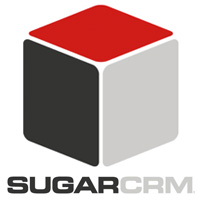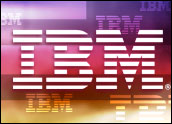
SugarCRM on Tuesday unveiled Sugar 7.7, the latest version of its CRM package, with several enhancements. A custom tag feature lets any record in the application be tagged for better classification and sharing. A new search UI automatically expands upon selection. The Sugar 7.7 Knowledge Base has been enhanced with an intelligence panel that displays context-sensitive information.
The update includes streamlined lead conversion and improved key quote and forecast information, and it supports Sugar Logic in the Sugar Customer Portal. Further, it has an improved Advanced Workflow functionality.
“We’ve focused on creating a modern CRM with an easy-to-use, consumer-like experience that empowers individual employees,” SugarCRM spokesperson Andrew Staples said.
The new features provide “the right information at exactly the right time,” he told CRM Buyer.
Striking a Balance
Tags are integrated into the Sugar database, allowing global search. They are not limited by user or customer. The tags are available as filter criteria in search results and as reporting criteria. They can be reviewed and managed.
Queries using the new search UI run across all Sugar standard and custom modules. They will match any text or number stored, and results will prioritize frequently viewed records. The result sets are color-coded, and they can be previewed and filtered by various criteria, including modules.
“The Sugar 7.7 investments and SugarCRM’s road map gave SugarCRM a significant leap in the last version of our Value Matrix,” Rebecca Wettemann, VP of research at Nucleus Research.
The road map will be disclosed atSugarCon June 13-16.
The investments “have improved usability, which are critical for SugarCRM maintaining its position in a very competitive market,” Wettemann told CRM Buyer. Sugar “appeals to more of a developer audience — so what it’s done with [Sugar 7.7] strikes a good balance between investment in developer tools and out-of-the-box usability for the end user.”
Taking on the Competition
SugarCRM is investing in mobile with a new software developer kit and mobile app configuration tool to be released later this year, Wettemann disclosed. These will be “critical steps in competing against the likes of Salesforce and Microsoft.”
Further, SugarCRM is “going upmarket in terms of larger enterprises, particularly in Latin America,” she said.
“We have invested a lot in moving the company upmarket to show enterprise companies that SugarCRM can go toe to toe with the biggest software companies in the world,” Staples noted. “It’s working — in our most recent quarter, we had 81 percent growth in our enterprise product line.”
That was a record-breaking quarter.
Although SugarCRM “does not stack up well against its cloud and on-premises brethren in some ways,” that could be because “they play to a different market with different rules,” suggested Denis Pombriant, principal at Beagle Research Group.
SugarCRM targets IT and customers that want to write code, he told CRM Buyer. In that context, Sugar 7.7 is a “reasonable announcement that provides users with ready access to current technologies.”
SugarCRM “is doing well in the SMB segment, and adding basic functionality with Sugar 7.7 creates value for existing customers but does not move the needle much in the overall functional coverage in the CRM market,” asserted Holger Mueller, principal analyst atConstellation Research.
Sugar 7.7 “does not scale up too well for large enterprises,” he told CRM Buyer. “It needs more in depth, such as in pricing.”
Life After Open Source
SugarCRM made its name as an open source product vendor but moved away from open source with Sugar 7, released in 2013.
The company “needed to put some distance between its for-pay and for-free products or there’d be little rationale for buying it,” Pombriant said.
“The media still loves to call us the open source CRM company, but that’s not correct anymore,” SugarCRM’s Staples pointed out. “Today, Sugar is a commercially licensed software offering.”
The company isn’t planning to release updates to its open source edition, he said.
“Open source has not worked well for enterprise software vendors,” Mueller observed. “When you expect best practices and maintenance, it’s no longer a viable option.”
























































